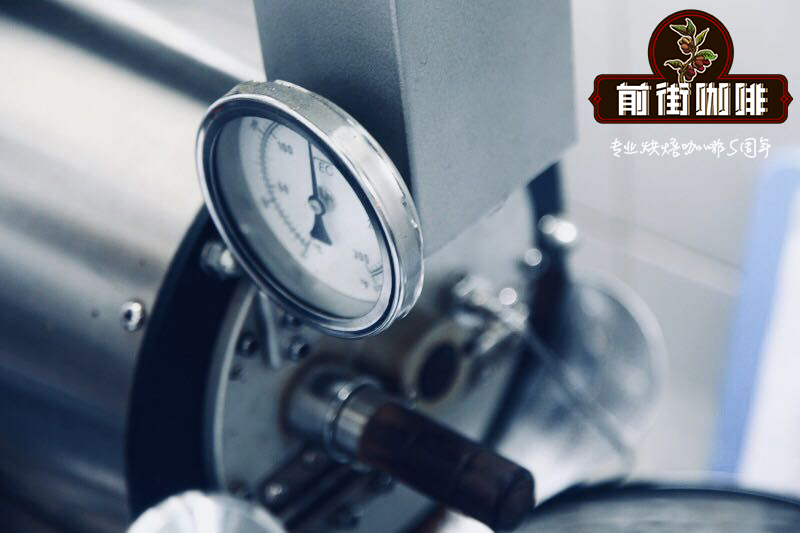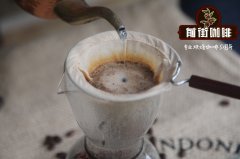How to extract the taste of coffee? What is the relationship between the extraction rate and the concentration? How to improve the extraction rate?

Professional coffee knowledge exchange more coffee bean information please follow the coffee workshop (Wechat official account cafe_style)
How to extract the taste of coffee? What is the relationship between the extraction rate and the concentration? How to improve the extraction rate?
The taste and extraction methods of coffee are very diverse. The European Fine Coffee Association once put forward the concept of "Gold cup". A certain extraction rate and coffee concentration determine the taste of coffee, but what is the extraction rate, and what is its effect on the taste of coffee? Here is some knowledge sharing:
Extraction rate: the ground coffee powder is not completely soluble in water, and the compounds that can really dissolve in water account for about 30%. In general coffee cooking, about 18% of the substances in coffee powder dissolve into water, while that of Espresso is about 15%, 25%, which is called extraction rate. If the extraction rate in a cup of coffee is on the low side, it is called insufficient extraction, while too high is over-extraction. But it is very important that the extraction rate and coffee concentration are completely different, so don't get confused.
Coffee concentration: weight of all compounds dissolved in water / total weight of coffee solution when more than 1000 coffee compounds appear in the process, no two cups of coffee will be exactly the same, but how do we know that degree of extraction will be the best? fortunately, these flavors can be classified into several categories, and compounds classified as similar will be extracted at similar temperatures and processes. Generally speaking, the heavier molecular weight dissolves more slowly, while the lighter molecular weight dissolves faster. The following two groups of compounds with lighter flavor and faster dissolution still exist even when the extraction is insufficient.
Sour fruit: aroma and taste of fruit and flowers, refreshing taste in sweeter coffee beans, but obvious fermented sour smell in less sweet coffee beans, and they dissolve fastest.
Mena reaction compounds: flavors and aromas of roasted grains, wood, nuts and tannins, sharp bitterness in less sweet coffee beans, while warm, round, malt aromas in sweeter coffee beans, they dissolve more slowly than fruit acids, but even the most underextracted coffee dissolves completely.
On the other hand, the following two kinds of molecules dissolve more slowly because of their heavier molecules, and their concentration can only be felt when the extraction rate is high.
Caramels: with caramel, vanilla, chocolate and sweetness, because almost all the sugar in raw coffee beans is caramelized during baking, so these are the main sources of sweetness in coffee, which tastes bitter and sweet and heavy caramel. it dissolves more slowly than light caramel, which tastes sweeter, and some light caramel dissolves even at lower extraction rates. But it will not be completely dissolved until a higher extraction rate is needed.
Dry distillation compounds: the so-called dry distillation compounds refer to those charred caramel and re-baked Rimena reaction post-reaction compounds become very obvious. In the less sweet coffee beans, they have cloves, tobacco, peat and heavy bitter, scorched taste, etc., in the sweeter coffee beans, they are bitter sweet honey, these compounds dissolve quite slowly, however, these compounds can be tasted even in very low concentrations, so in order to avoid these flavors, the extraction rate must be controlled within a certain range.
The classification of these flavors provides us with our understanding of balanced coffee extraction. How to accurately and detailedly describe the taste of coffee is an art. However, we distinguish the perceived taste according to the above four categories. It is also easy to tell whether coffee is underextracted, overextracted and just right.
Insufficient extraction: whether the fruit acid smells rotten and fermented, while the Mena reaction compound has a sharp and obvious bitter taste.
Proper extraction: refreshing fruit acid, Mena reaction compound round and warm taste
Over-extraction: heavy and sticky taste, only bitter sweet caramel taste and can not feel other odors.
Important Notice :
前街咖啡 FrontStreet Coffee has moved to new addredd:
FrontStreet Coffee Address: 315,Donghua East Road,GuangZhou
Tel:020 38364473
- Prev

How do you make iced coffee at home? What recipes do you recommend? Production process and steps?
Professional coffee knowledge exchange more coffee bean information please follow the coffee workshop (Wechat official account cafe_style) how to make iced coffee at home? What recipes do you recommend? Production process and steps? In the scorching heat, have a cold cold coffee (or iced coffee), that feeling is not too good! But do you know what kind of cold coffee tastes better? Today
- Next

Introduction to the teaching of brewing in the process of making cold-extracted coffee the difference in taste between cold-extracted coffee and cold-brewed coffee
Professional coffee knowledge exchange more coffee bean information please follow the coffee workshop (Wechat official account cafe_style) what is the meaning of cold extraction? What is cold coffee? Production steps and methods? Do you want to drink it as soon as possible? Cold-extracted coffee, also known as cold-brewed coffee, is extracted with an appropriate amount of coffee powder and cold water at low temperature for a long time.
Related
- Detailed explanation of Jadeite planting Land in Panamanian Jadeite Manor introduction to the grading system of Jadeite competitive bidding, Red bid, Green bid and Rose Summer
- Story of Coffee planting in Brenka region of Costa Rica Stonehenge Manor anaerobic heavy honey treatment of flavor mouth
- What's on the barrel of Blue Mountain Coffee beans?
- Can American coffee also pull flowers? How to use hot American style to pull out a good-looking pattern?
- Can you make a cold extract with coffee beans? What is the right proportion for cold-extracted coffee formula?
- Indonesian PWN Gold Mandrine Coffee Origin Features Flavor How to Chong? Mandolin coffee is American.
- A brief introduction to the flavor characteristics of Brazilian yellow bourbon coffee beans
- What is the effect of different water quality on the flavor of cold-extracted coffee? What kind of water is best for brewing coffee?
- Why do you think of Rose Summer whenever you mention Panamanian coffee?
- Introduction to the characteristics of authentic blue mountain coffee bean producing areas? What is the CIB Coffee Authority in Jamaica?

